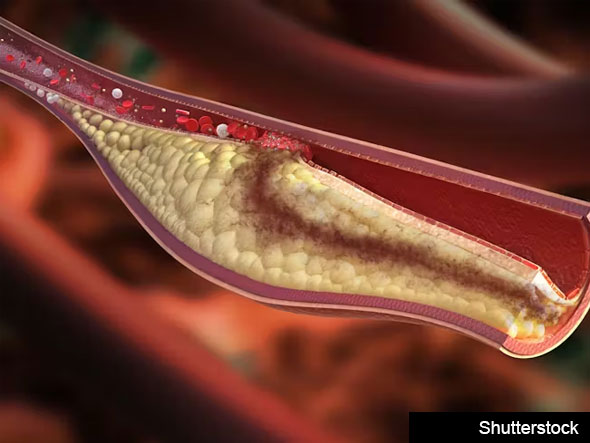A remarkable new study has uncovered a correlation between microplastics and heart health, though. The researchers found that people who had detectable microplastics and nanoplastics in the plaque in their arteries had a higher risk of heart attack, stroke and death.
The researchers looked at 257 people altogether. All of the patients were already undergoing preventative surgery to remove plaque from their carotid arteries (the main arteries that supply the brain with blood). This allowed the researchers to collect plaque samples and perform a chemical analysis. They then followed up with participants 34 months later.
Of the 257 participants, 150 were found to have the presence of microplastics and nanoplastics in their arterial plaque – mainly fragments of two of the most commonly used plastics in the world, polyethylene (used in grocery bags, bottles and food packaging) and polyvinyl chloride (used in flooring, cladding and pipes).
A statistical analysis of this data found that patients with microplastics and nanoplastics in their plaque had a higher risk of suffering a heart attack, stroke or death from any cause, compared with those who had no microplastics or nanoplastics in their plaque.
The researchers also analyzed the macrophages (a type of immune cell that helps remove pathogens from the body) in the patients’ arteries. They found that participants who’d had microplastics and nanoplastics in their plaque also had evidence of plastic fragments in their macrophages.
“This is a landmark trial,” says Robert Brook, a physician-scientist at Wayne State University in Detroit, Michigan, who studies the environmental effects on cardiovascular health and was not involved with the study. “This will be the launching pad for further studies across the world to corroborate, extend and delve into the degree of the risk that micro- and nanoplastics pose.”
Giuseppe Paolisso, an internal-medicine physician at the University of Campania Luigi Vanvitelli in Caserta, Italy, and his colleagues knew that microplastics are attracted to fat molecules, so they were curious about whether the particles would build up in fatty deposits called plaques that can form on the lining of blood vessels. The team tracked 257 people undergoing a surgical procedure that reduces stroke risk by removing plaque from an artery in the neck.
The researchers put the excised plaques under an electron microscope. They saw jagged blobs — evidence of microplastics — intermingled with cells and other waste products in samples from 150 of the participants. Chemical analyses revealed that the bulk of the particles were composed of either polyethylene, which is the most used plastic in the world and is often found in food packaging, shopping bags and medical tubing, or polyvinyl chloride, known more commonly as PVC or vinyl.
On average, participants who had more microplastics in their plaque samples also had higher levels of biomarkers for inflammation, analyses revealed. That hints at how the particles could contribute to ill health, Brook says. If they help to trigger inflammation, they might boost the risk that a plaque will rupture, spilling fatty deposits that could clog blood vessels.

